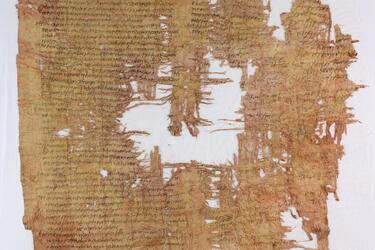Scientists decipher Roman papyrus dating back to 1900: what makes it unique

Researchers have deciphered a unique 1900-year-old papyrus that contains a detailed description of a trial from the period of Roman rule in Israel. According to Live Science, this discovery sheds light on criminal cases of the time and helps answer questions about slavery in the region.
In 2014, researchers discovered the longest Greek papyrus found in the Judean Desert. Initially, the document was mistakenly thought to be in Nabataean, an ancient Arabic dialect. However, papyrus expert Hannah Cotton of the Hebrew University of Jerusalem quickly determined that the text was written in Greek. This is reported by Live Science.
Over the next ten years, a team of scientists carefully deciphered the 133-line text, which contains notes for a prosecutor preparing for a trial before Roman officials. The scientists found that this document dates from the reign of Emperor Hadrian (117-138 AD), on the eve of the Bar Kokhba revolt in 132 AD.
Study co-author Avner Eker, an epigraphist at the Hebrew University, said: "This is the best documented Roman court case from Judea, apart from the trial of Jesus."
The court case concerned two individuals, Gadalias and Saulos, who falsified documents regarding the sale and release of slaves in an attempt to evade Roman taxes.
Anna Dolganov, a papyrus expert at the Austrian Academy of Sciences, explains: "In the Roman Empire, document forgery and tax fraud were punished severely, from hard labor to the death penalty."
The papyrus also contains notes from one prosecutor to another, which gives an idea of the prosecution's strategy.
Part of the scroll is lost, which makes it difficult to understand all the details of the case. It is not known where exactly the trial took place, whether the accused were Roman citizens, or what the verdict was.
However, the papyrus provides an answer to a controversial question: did ancient Jews own slaves? The document confirms that at least one Jewish family, that of Saulos and his father, owned several slaves. However, it is unclear whether these slaves were Jews.
Probably, the trial was interrupted by the Bar Kokhba revolt, and the owner of the scroll hid it in the caves of the Judean Desert to escape. The document remained there for almost two millennia along with other Dead Sea Scrolls.
If you want to get the latest news about the war and events in Ukraine, subscribe to our Telegram channel!
